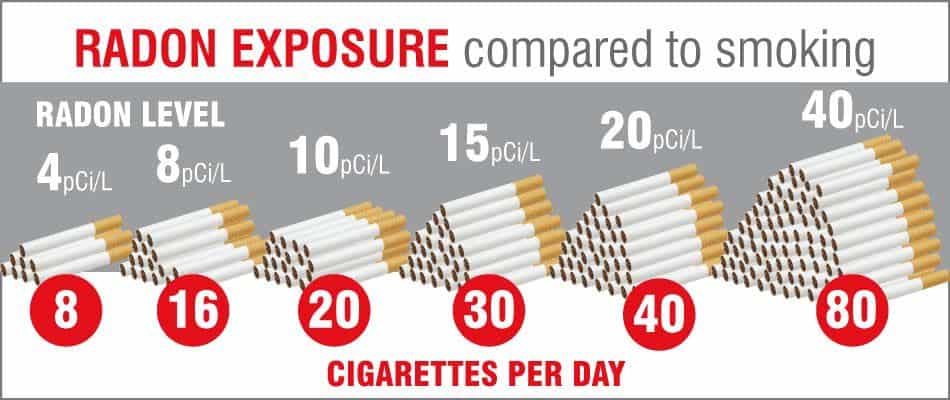What is Radon?
Radon is a radioactive, colorless, odorless, tasteless gas, occurring naturally as a decay product of radium. Radon enters your home through the soil and it is everywhere, some areas just have higher levels of it. To be sure levels of radon in your home are safe for habitation, a 48 hour continuous measurement in the lowest habitable level of your home will be conducted.
Radon is measured in picocuries per liter, or pCi/L. The natural outdoor level of radon in the United States is 0.2 – 0.4 pCi/L. The US EPA has set the action level of indoor radon levels to be 4.0 pCi/L, meaning any measurement found in a home at this level or greater requires radon mitigation. You can view a map of areas across the United States and what the average measurement is by visiting epa.gov.
Radon Facts
- It is the second leading cause of lung cancer in the United States next to smoking.
- Concentrations vary with season, day to day, and hour to hour.
- Soil, Well Water, and certain building materials are sources of radon.
- There are radon spas in Russia and Central Europe that treat a number of conditions.
- Children are at higher risk from radon exposure than adults because they have more rapidly dividing cells and a higher metabolic rate making genetic damage more serious.
- One in 15 homes in the United States has elevated radon levels.
- The EPA recommends strong consideration for fixing homes for radon levels between 2 pCi/L and 4 pCi/L.
- Radon is responsible for 58 deaths per day.
- A Radon level of 4 pCi/L is the equivalent of smoking 8 cigarettes per day.

How to Prepare for a Radon Measurement
Tampering with a radon or radon progeny measurement is prohibited by law and may result in civil penalties.
Radon testing which lasts for no longer than a week shall be conducted under closed-building conditions. Closed-building conditions require:
- Operation of permanently installed HVAC systems shall continue during closed-building conditions. Radon Measurement licensees shall inform the resident in writing that operation of dryers, range hoods, bathroom fans and other mechanical systems that draw air out of the building may adversely affect the measurement results.
- In buildings having permanently installed radon mitigation systems, the mitigation system shall be functioning during the measurement interval.
- Air conditioning systems that recycle interior air may be operated during closed-building conditions.
- All windows shall be kept closed. Individuals licensed in accordance with the Home Inspector License Act [225 ILCS 441] may momentarily open and reclose windows when performing an inspection, after informing the measurement licensee of the inspection.
- All external doors shall be closed except for normal entry and exit. Structural openings due to disrepair or structural defects shall be repaired to correct their condition prior to initiation of closed-building conditions. All exterior windows and doors shall be inspected by a Radon Measurement Professional licensee or Radon Measurement Technician at the placement and retrieval of the detectors and the result of the inspection documented for the measurement file.
- Whole-house fans shall not be operated. Portable window fans shall be removed from the window or sealed in place. Window air conditioning units shall only be operated in a recirculating mode. If the building contains an air handling system, the air handling system shall not be set for continuous operation unless the air handling equipment is specifically used for radon control and is so labeled.
- Fireplaces or combustion appliances, except water heaters and cooking appliances, shall not be operated unless they are the primary sources of heat for the building.
- Ceiling fans, portable dehumidifiers, portable humidifiers, portable air filters and window air conditioners shall not be operated within 20 feet of the detector.
If you have any more questions visit the EPA’s frequently asked questions section. See a sample radon testing report below:
VIEW Sample Report
